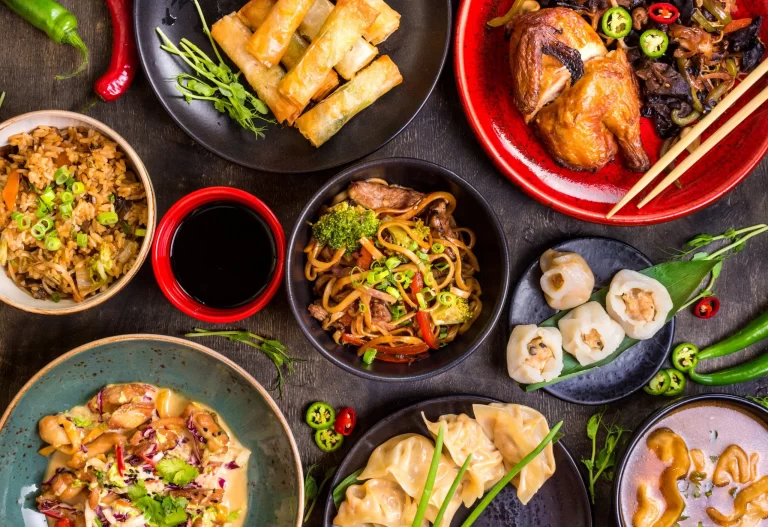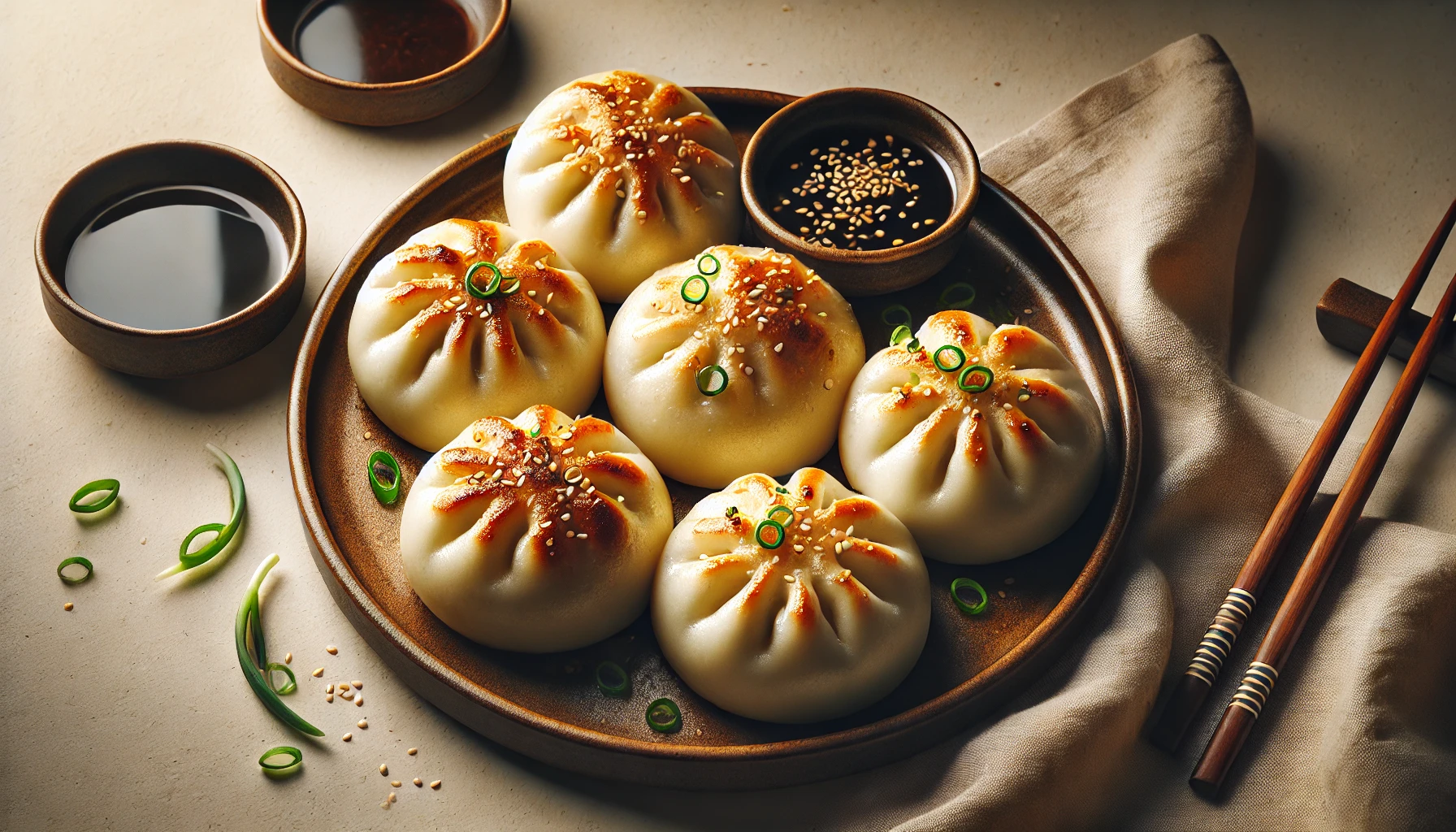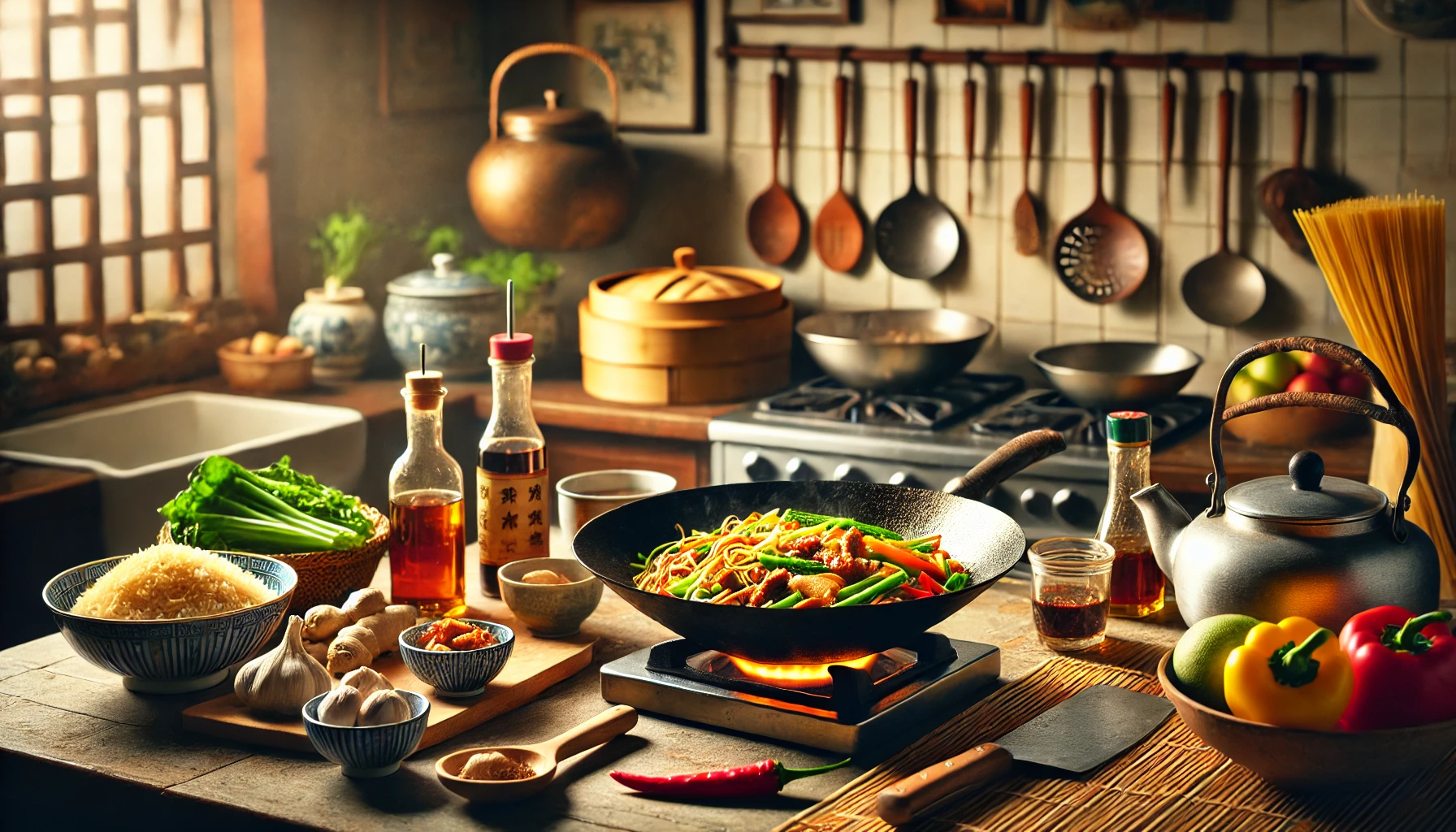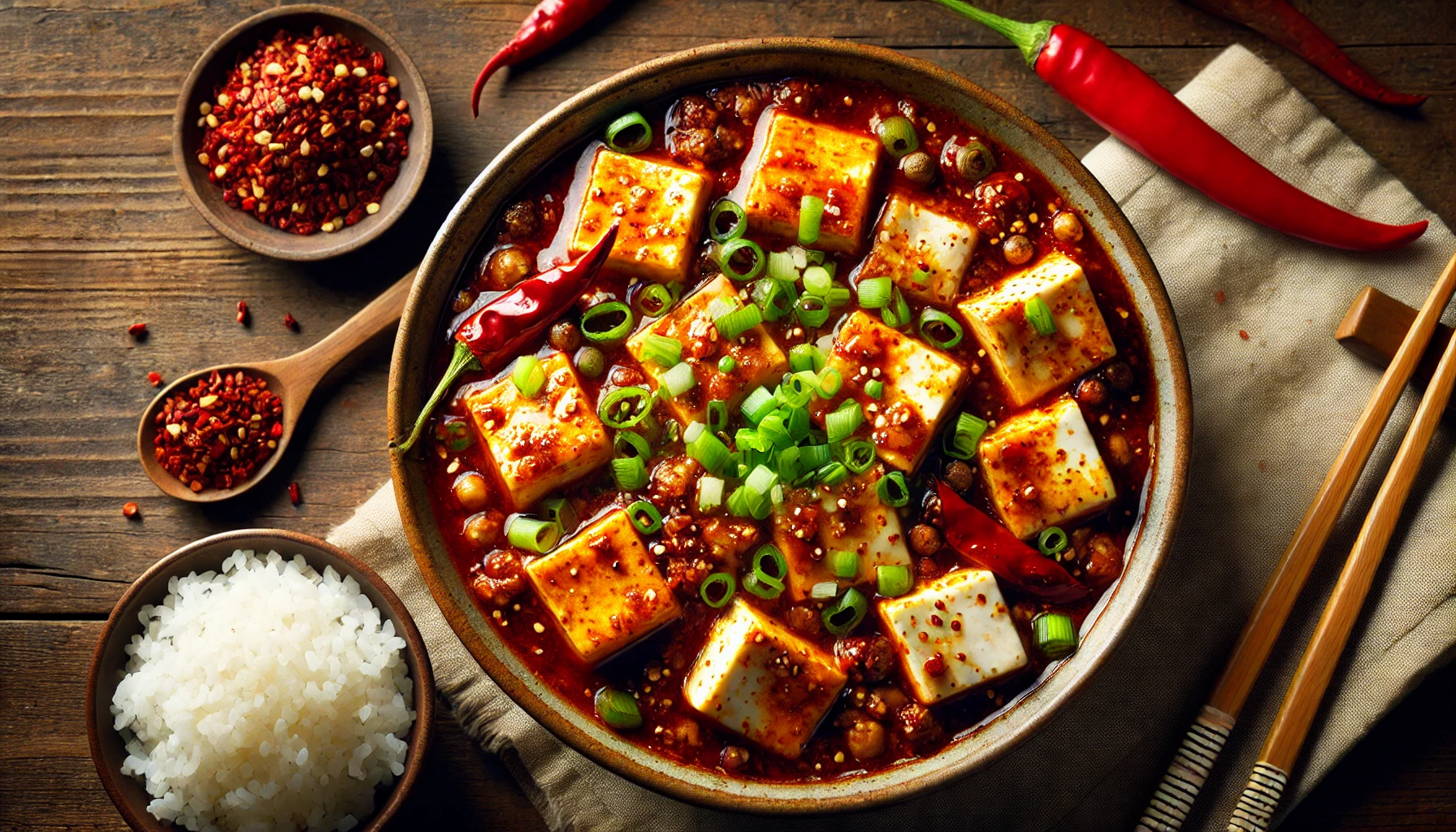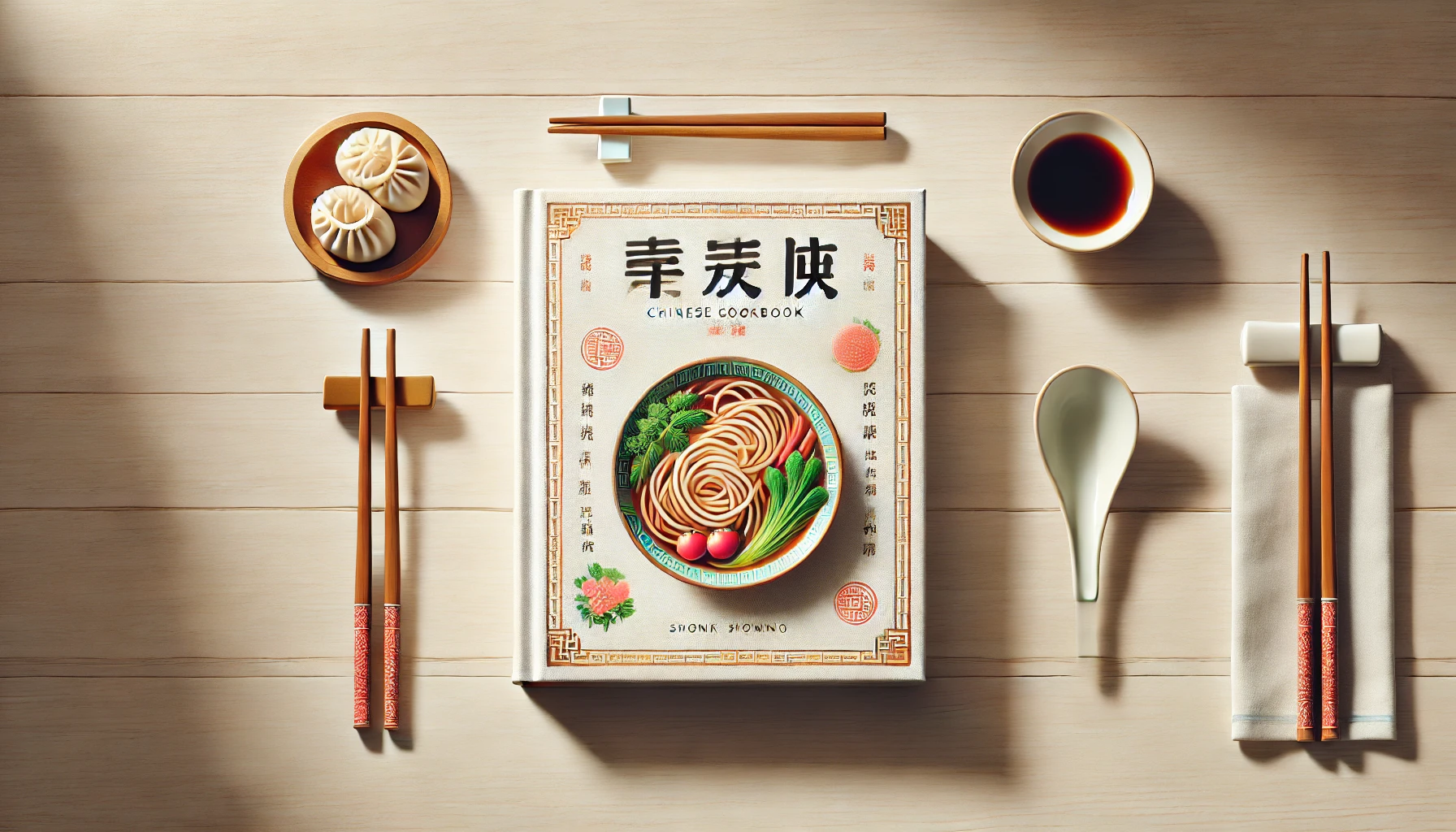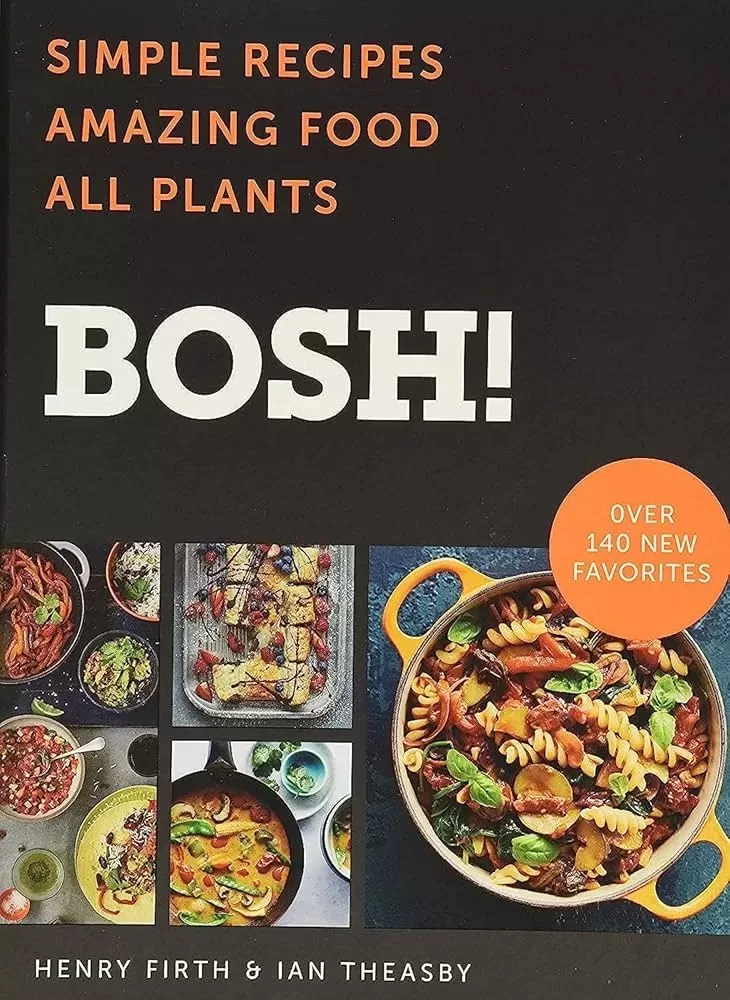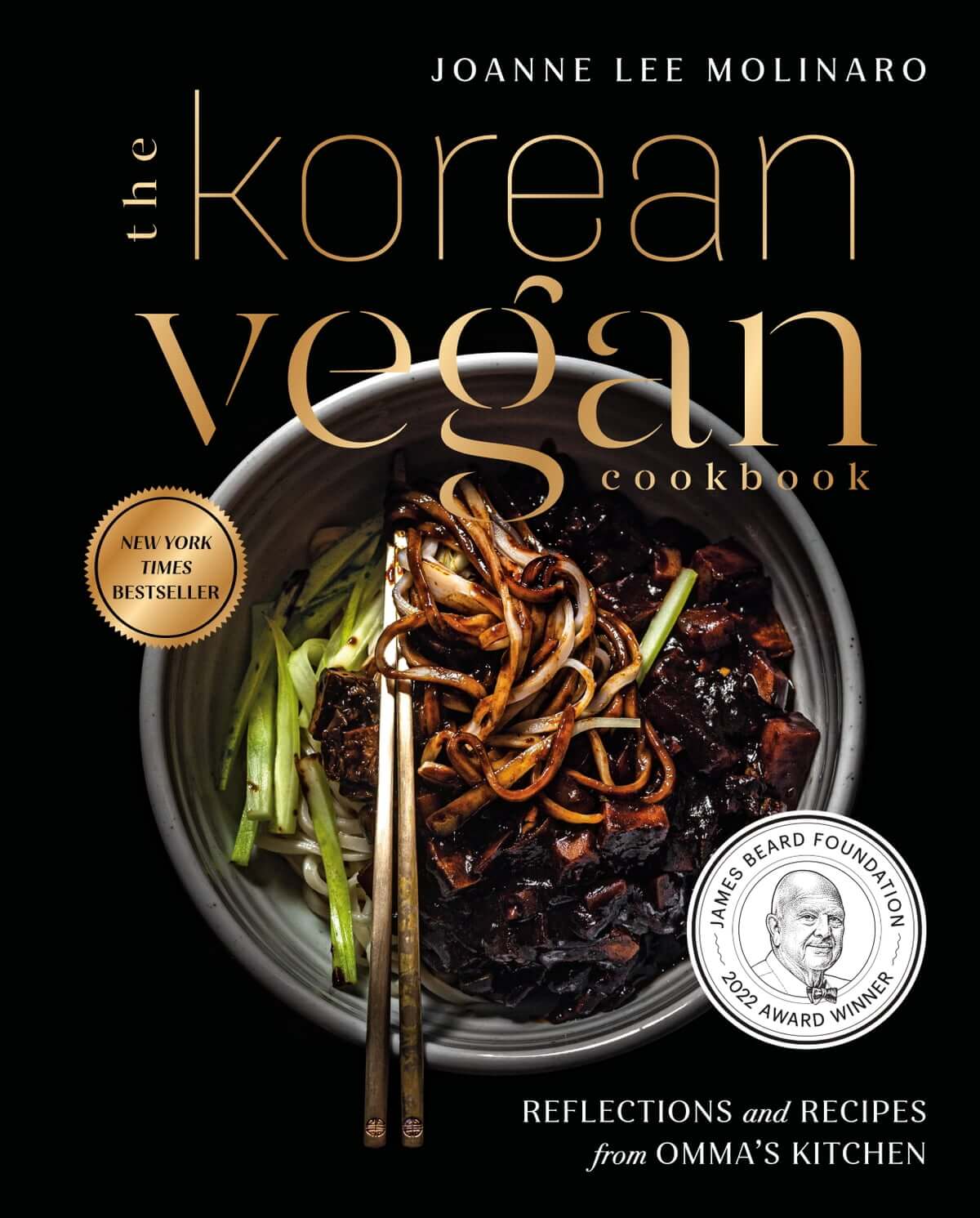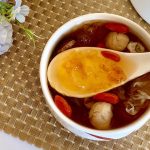Chinese cuisine is famous for its variety of flavors, styles, and cooking techniques. Recognized as one of the top cuisines around the world, it encompasses eight major regional styles, each offering something special. From the spicy dishes of Sichuan to the light and sweet flavors of Cantonese food, Chinese cooking reflects a long history and rich traditions. No matter your taste, there’s always something to enjoy.
This article will introduce you to the 8 must-try Chinese cuisines that show the best of Chinese food. These regional styles are full of unique ingredients and delicious recipes that everyone should experience. Ready to explore? Let’s dive into these amazing cuisines!
Best 8 Chinese Cuisines Representing Different Regions:
- Sichuan Cuisine (Southwest)
- Cantonese Cuisine (South)
- Shandong Cuisine (Northeast)
- Hunan Cuisine (Central)
- Jiangsu Cuisine (East)
- Fujian Cuisine (Southeast)
- Zhejiang Cuisine (East Coast)
- Xinjiang Cuisine (Northwest)
Each of the 8 Chinese cuisines comes from a specific region, reflecting its unique flavors and traditions. As travel and cultural exchange grow, the differences between these cuisines are becoming less defined. Popular dishes like braised pork belly are being adapted by different regions, creating new versions that suit local tastes. This mix of traditional and modern styles makes Chinese cuisine even more exciting, offering fresh twists on classic dishes.
1. Sichuan Cuisine (Southwest)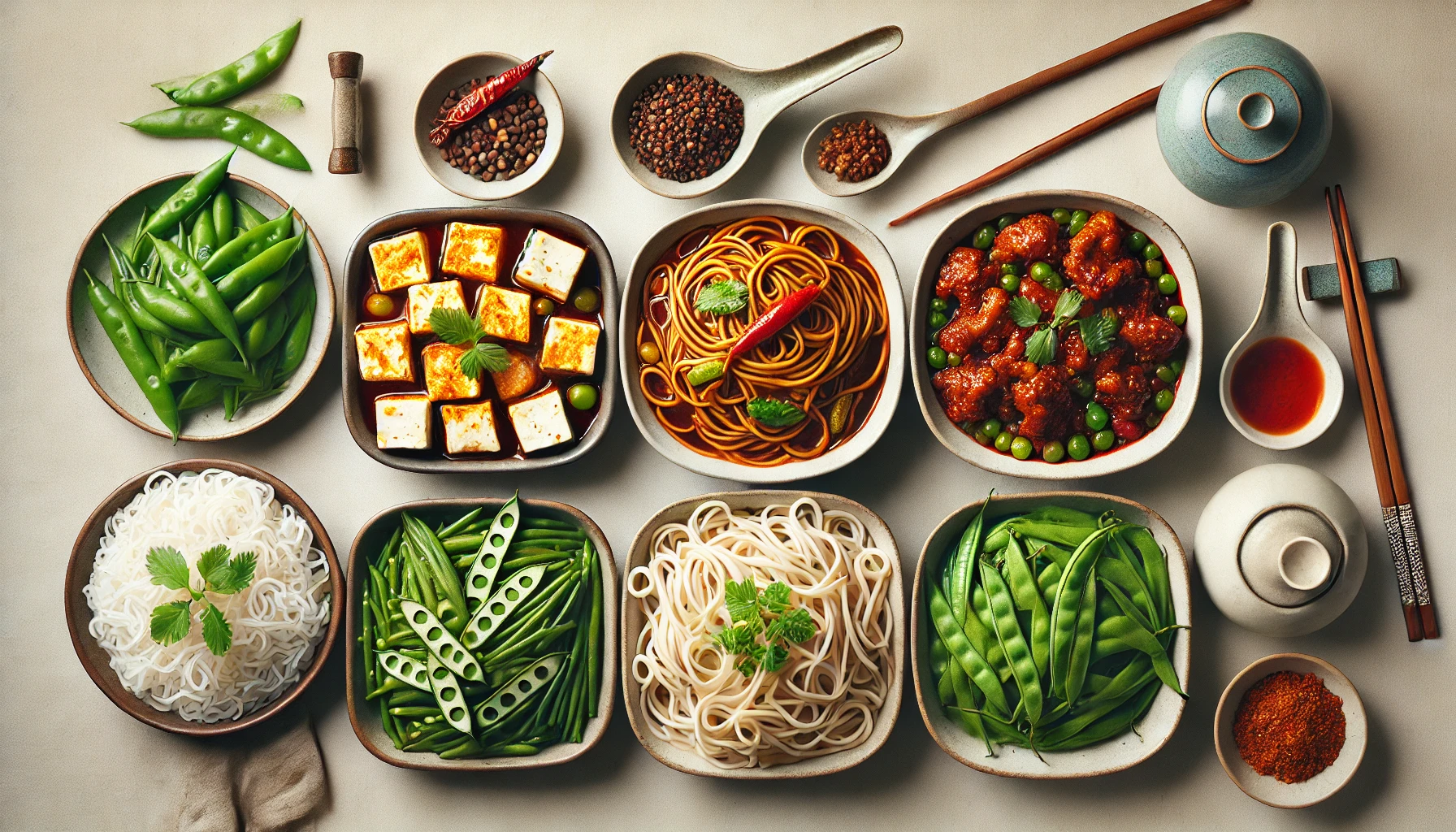
Sichuan cuisine from Southwest China is known for its bold and spicy flavors that are loved by many. A key ingredient is the famous Sichuan peppercorn, which creates a unique numbing sensation when paired with chili. This combination gives dishes like Kung Pao Chicken, Mapo Tofu, and Sichuan Hot Pot their signature taste. The flavors are rich, exciting, and perfect for anyone who enjoys spicy food with a touch of complexity.
But Sichuan cuisine isn’t just about heat. It also includes a mix of tangy, salty, and even sweet flavors, making it diverse and interesting. Every dish highlights fresh ingredients and traditional cooking techniques that are central to Chinese cuisine. If you’re looking for an unforgettable food experience, Sichuan cuisine offers a unique blend of flavors that will leave you wanting more.
- Kung Pao Chicken
Kung Pao Chicken is a popular dish in Sichuan cuisine that combines tender chicken, crunchy peanuts, and dried chili peppers. It’s cooked in a savory and slightly sweet sauce with a touch of tanginess. The dish is full of bold flavors and textures, making it a favorite for anyone who loves spicy and flavorful food.
- Mapo Tofu
Mapo Tofu is a well-known dish in Sichuan cuisine, made with soft tofu cooked in a spicy, flavorful sauce. The sauce often includes chili bean paste, ground pork or beef, and Sichuan peppercorns for a numbing, spicy taste. It’s a comforting and delicious choice for anyone who enjoys bold and fiery dishes.
- Sichuan Hot Pot
2. Cantonese Cuisine (South)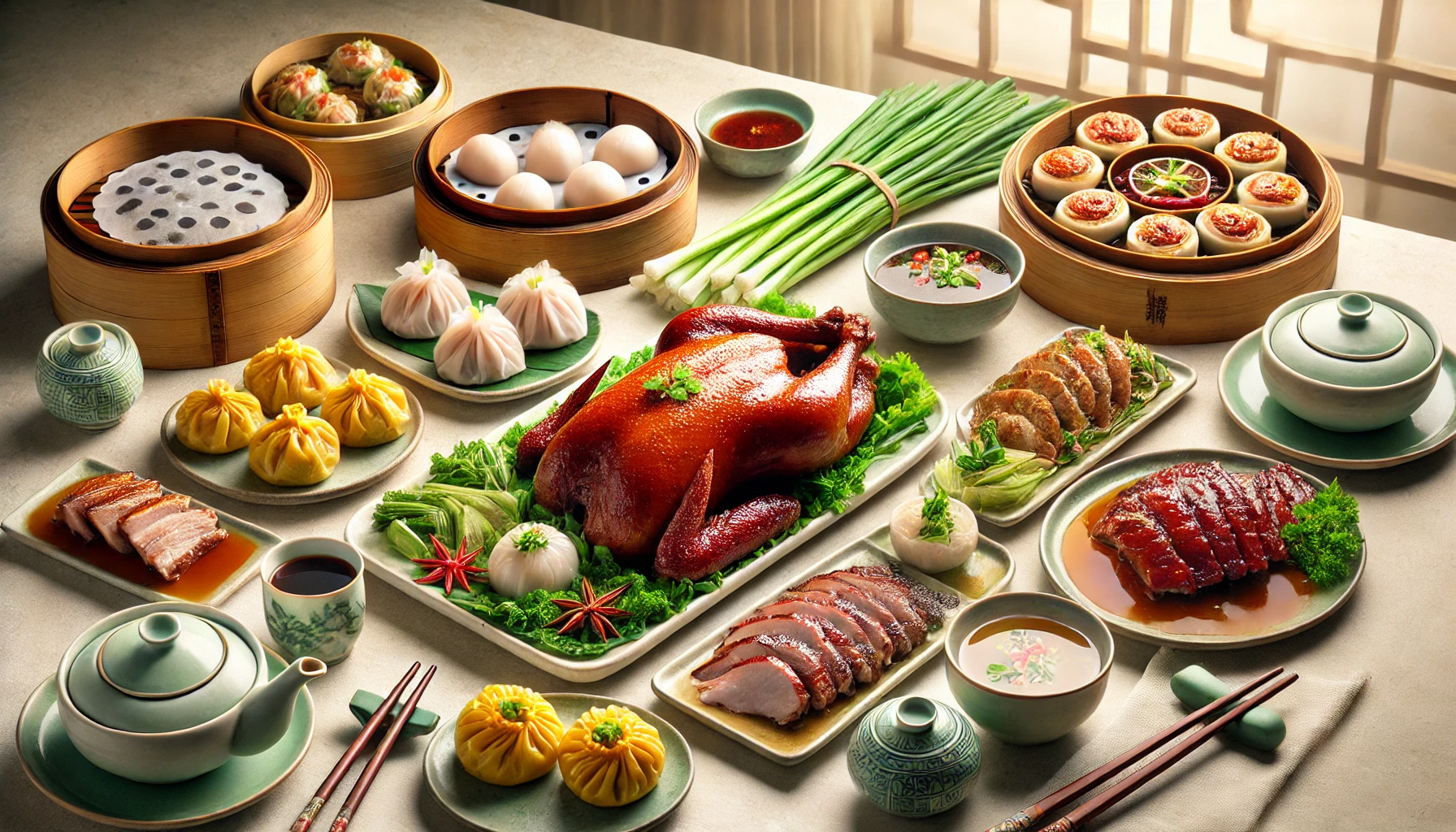
Cantonese cuisine, from Southern China, is famous for its focus on fresh ingredients and light, natural flavors. Unlike the spicy dishes of other regions, Cantonese food uses simple sauces and mild seasonings to let the ingredients shine. Dishes like Dim Sum, Char Siu (roast pork), and Steamed Fish are popular examples of this style, offering a perfect balance of flavor and freshness.
What makes Cantonese cuisine special is its variety and careful cooking methods. Steaming and stir-frying are often used to preserve the natural taste and texture of the ingredients. From roasted meats to delicate dim sum, every dish is prepared with attention to detail. Whether you enjoy it at a restaurant or a market, Cantonese food offers a delicious and subtle way to experience Chinese cuisine.
- Dim Sum
Dim Sum is a popular part of Cantonese cuisine, made up of small dishes like dumplings, buns, and rolls. These dishes often include fillings like shrimp, pork, or vegetables and are served in steamer baskets or on small plates. Enjoyed with tea, dim sum is more than just food—it’s a social tradition perfect for sharing with family and friends.
- Char Siu (Roast Pork)
Char Siu, or Cantonese roast pork, is a flavorful and tender dish. The pork is marinated in a sweet and savory sauce made with soy sauce, honey, and spices, then roasted until caramelized. Its glossy red color and smoky flavor make it a favorite choice in Chinese cuisine.
- Steamed Fish
3. Shandong Cuisine (Northeast)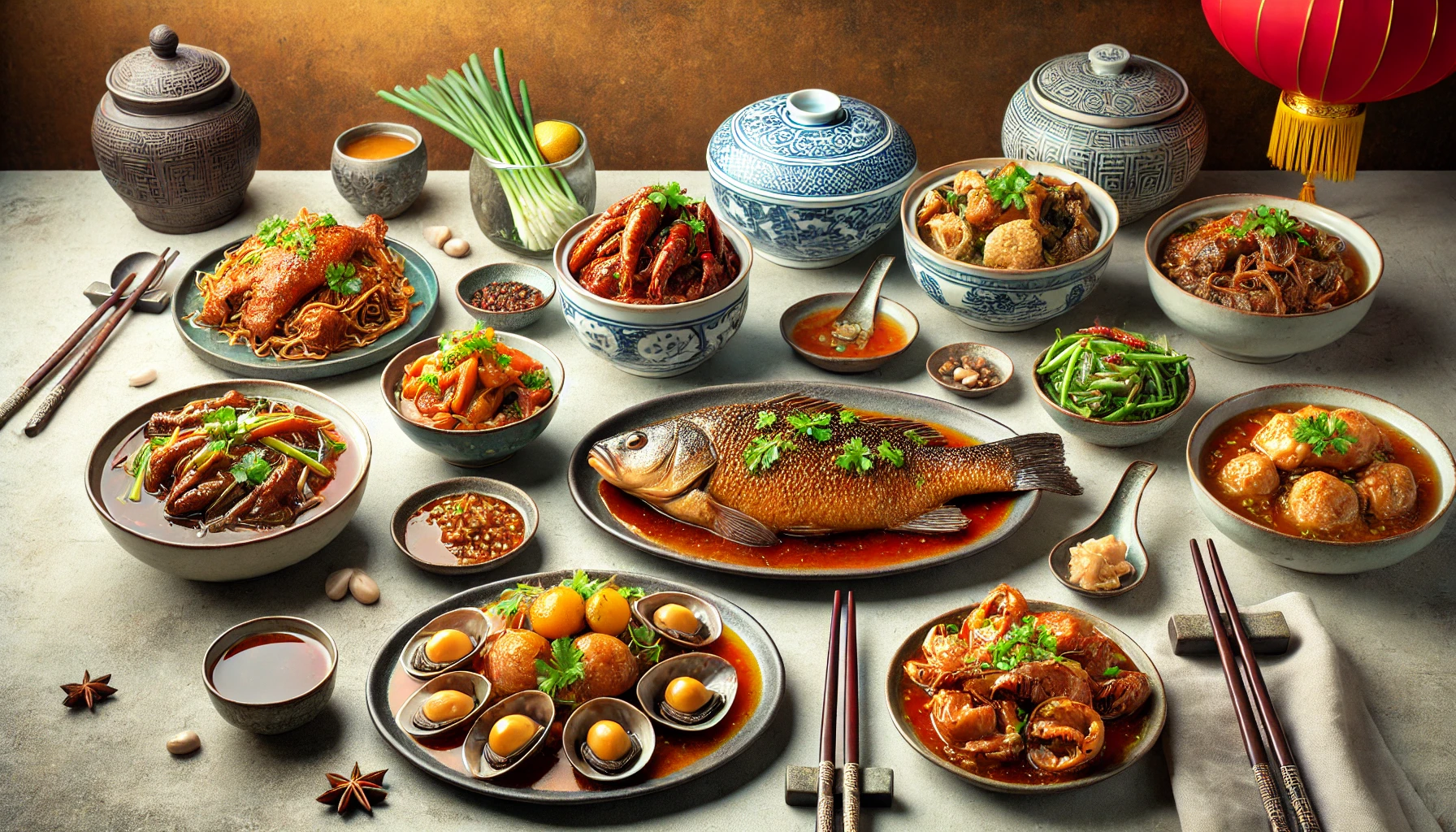
Shandong cuisine, one of the oldest in China, is known for its bold and savory flavors. Coming from the Northeast, it often uses fresh seafood, thanks to the region’s coastal location. Popular dishes like Braised Sea Cucumber, Sweet and Sour Carp, and Crispy Fried Prawns show its focus on fresh and high-quality ingredients.
This cuisine is also famous for simple cooking methods like braising, roasting, and frying, which bring out the natural flavors of the food. Thick soups and hearty broths are another highlight, adding a comforting touch to meals. With its rich and satisfying dishes, Shandong cuisine is a unique and important part of Chinese cuisine.
- Braised Sea Cucumber
Braised Sea Cucumber is a traditional dish in Shandong cuisine, known for its soft and rich texture. The sea cucumber is slowly cooked in a savory sauce made with soy sauce, garlic, and broth, allowing it to soak up the flavors. This dish is popular not just for its taste but also for its nutritional value.
- Sweet and Sour Carp
Sweet and Sour Carp is a famous dish in Shandong cuisine that combines crispy fried fish with a tangy and sweet sauce. The carp is fried until golden, then coated in a sauce made from vinegar, sugar, and tomato. It’s a flavorful and eye-catching dish that’s loved for its crunchy texture and balance of flavors.
- Crispy Fried Prawns
4. Hunan Cuisine (Central)
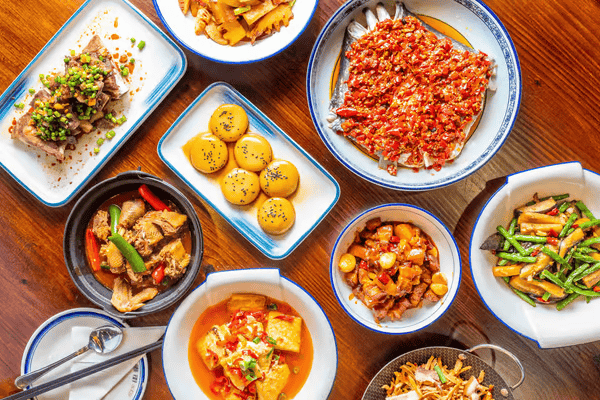
Hunan cuisine, from Central China, is known for its bold, spicy, and fragrant dishes. It uses a lot of chili, garlic, and shallots to create meals that are hot but still balanced with fresh flavors. Popular dishes like Chairman Mao’s Red-Braised Pork, Steamed Fish Head with Chili, and Dry Pot Spicy Chicken highlight the region’s love for rich and vibrant tastes.
What makes Hunan cuisine stand out is its variety and depth. It’s not just about being spicy; it also includes sour and smoky flavors, creating a mix of tastes that are exciting and satisfying. Common cooking methods like steaming, stir-frying, and smoking help bring out the best in the ingredients. If you enjoy flavorful and spicy food, Hunan cuisine is a must-try part of Chinese cuisine.
- Chairman Mao’s Red-Braised Pork
Chairman Mao’s Red-Braised Pork is a classic dish in Hunan cuisine, loved for its rich and savory flavor. Tender pork belly is slowly cooked in a sweet and salty sauce made from soy sauce, sugar, and spices. Named after Mao Zedong, this dish is famous for its soft, melt-in-your-mouth texture and comforting taste.
- Steamed Fish Head with Chili
Steamed Fish Head with Chili is a well-known dish in Hunan cuisine, offering a mix of fresh and spicy flavors. The fish head is steamed and topped with a layer of chopped chilies, garlic, and black beans, giving it a bold and fragrant taste. This dish is perfect for anyone who enjoys fresh seafood with a spicy twist.
- Dry Pot Spicy Chicken
5. Jiangsu Cuisine (East)
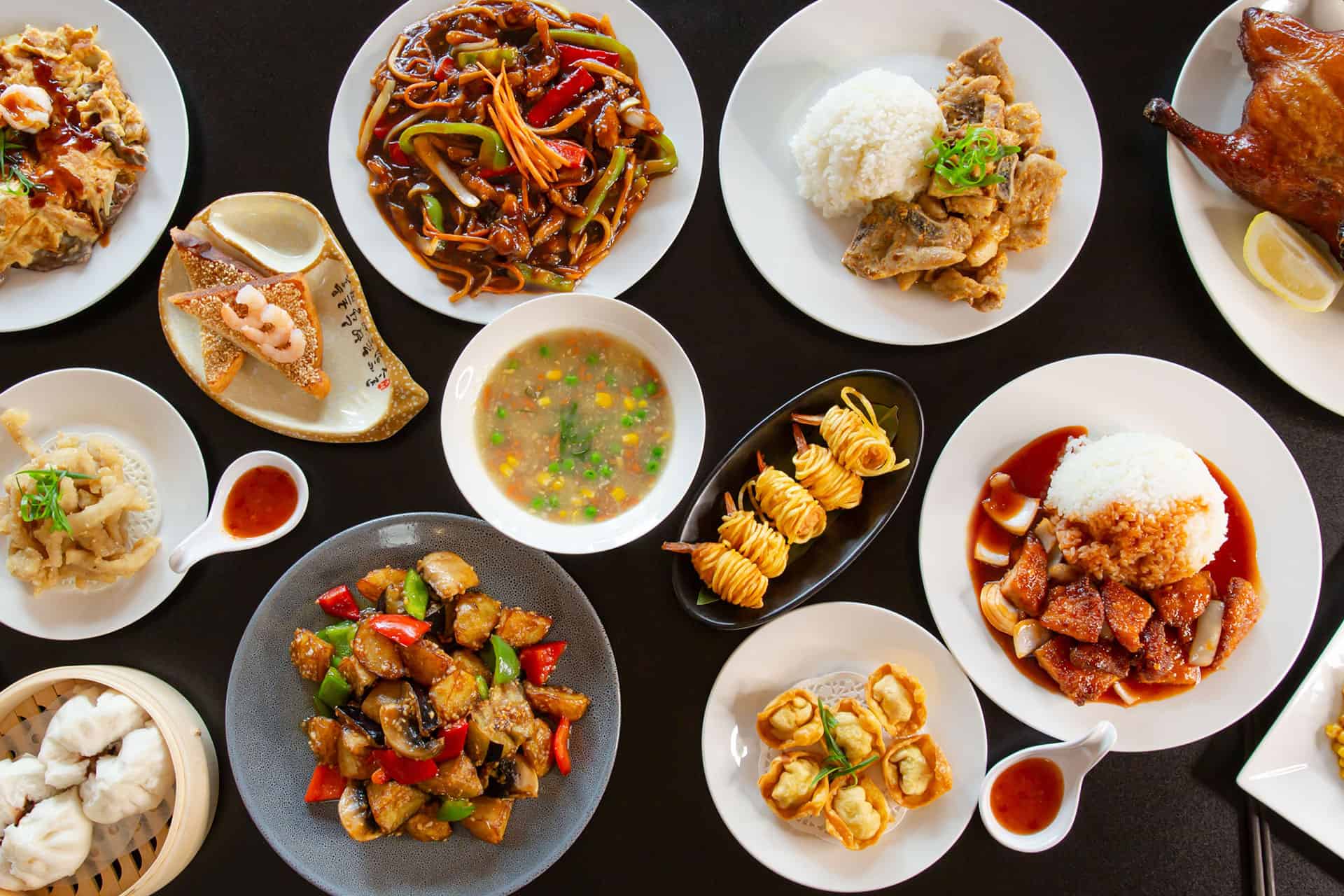
Jiangsu cuisine, from Eastern China, is famous for its light, fresh, and refined flavors. This style of Chinese cuisine focuses on high-quality ingredients and careful cooking techniques. Dishes often have a balance of sweet and savory flavors, with smooth textures and elegant presentations. Popular dishes like Sweet and Sour Mandarin Fish, Lion’s Head Meatballs, and Braised Pork Belly show the region’s love for flavorful and beautiful food.
What makes Jiangsu cuisine special is its focus on detail and balance. Cooking methods like braising and stewing are often used to keep the natural flavors of the ingredients. Soups and sauces are also important, adding extra richness and depth. If you enjoy fresh and refined dishes, Jiangsu cuisine is a wonderful way to explore the lighter side of Chinese food.
- Sweet and Sour Mandarin Fish
Sweet and Sour Mandarin Fish is a well-loved dish in Jiangsu cuisine, known for its bright flavors and beautiful look. The fish is fried until crispy and then covered in a sweet-and-sour sauce made with vinegar, sugar, and tomato. Its mix of tangy and sweet flavors, along with its tender texture, makes it a standout dish in Chinese cuisine.
- Lion’s Head Meatballs
Lion’s Head Meatballs are a classic dish in Jiangsu cuisine, made from large, tender pork meatballs. They are cooked slowly in a rich broth with vegetables, creating a soft texture and savory taste. The name comes from the meatballs’ round shape, which looks like a lion’s head, adding a touch of tradition to this comforting dish.
- Braised Pork Belly
6. Fujian Cuisine (Southeast)
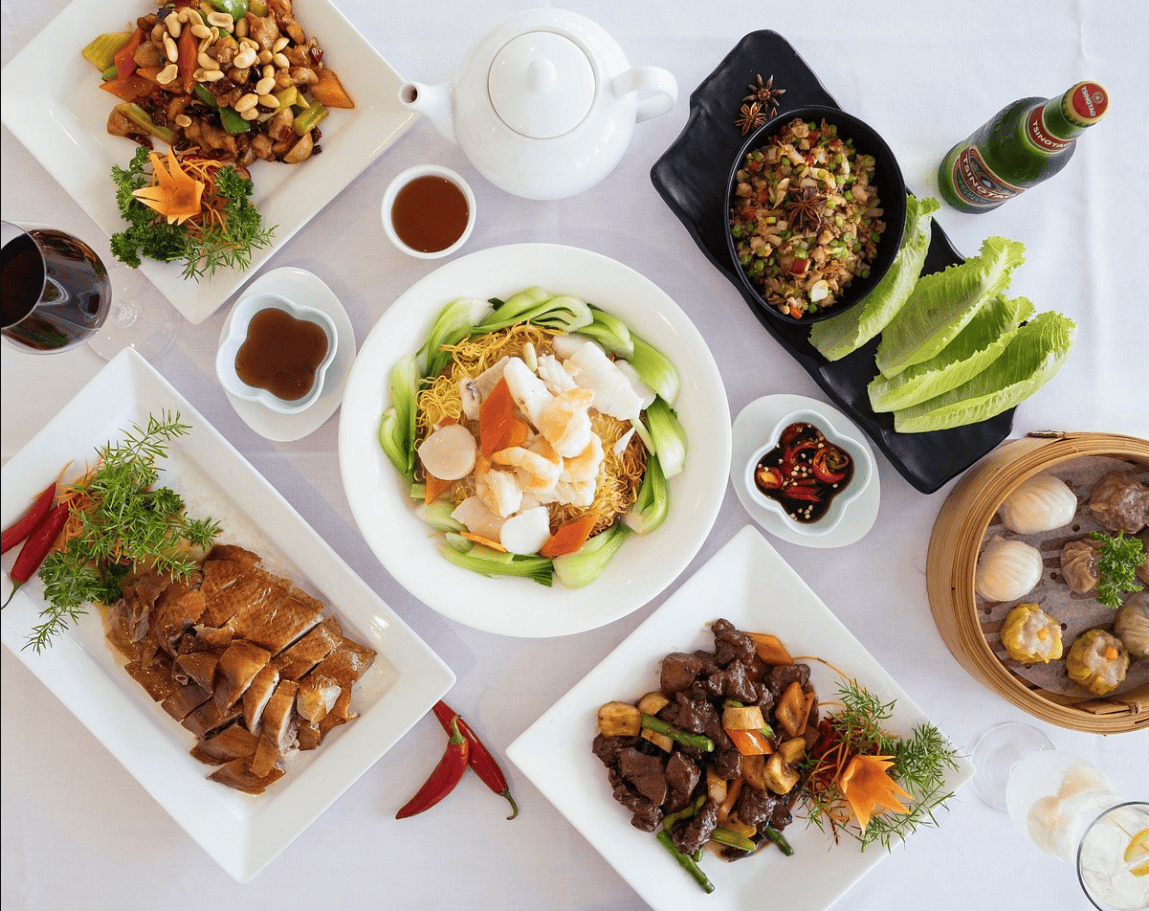
Fujian cuisine, from Southeast China, is known for its light and fresh flavors. It focuses on seafood and soups, using simple seasonings to highlight natural tastes. Popular dishes like Buddha Jumps Over the Wall, Oyster Omelette, and Fujian Red Wine Chicken show the region’s love for balanced and flavorful meals.
What makes Fujian cuisine special is its slow-cooking methods, like braising and stewing, which bring out rich and comforting flavors. Soups are a key part of this cuisine, combining fresh seafood, vegetables, and mild spices. If you enjoy light but tasty dishes, Fujian cuisine is a great way to explore the food of Southeast China.
- Buddha Jumps Over the Wall
Buddha Jumps Over the Wall is a famous dish in Fujian cuisine, known for its rich flavors and variety of ingredients. It includes delicacies like abalone, sea cucumber, scallops, and mushrooms, all cooked in a flavorful broth. This dish is slow-cooked to create a deep aroma and is considered a luxurious meal often served on special occasions.
- Oyster Omelette
Oyster Omelette is a popular dish in Fujian cuisine, loved for its crispy texture and fresh taste. It is made with fresh oysters, eggs, and a bit of starch, fried until golden. Often served with a tangy dipping sauce, this dish is a simple yet delicious way to enjoy the region’s seafood.
- Fujian Red Wine Chicken
7. ZhejiangCuisine (East Coast)

Zhejiang cuisine, from China’s East Coast, is famous for its fresh and light flavors. Often called “the land of fish and rice,” this cuisine uses high-quality ingredients like seafood and seasonal vegetables. Popular dishes such as West Lake Fish in Vinegar Sauce, Dongpo Pork, and Beggar’s Chicken show its focus on natural and balanced tastes.
What makes Zhejiang cuisine stand out is its simplicity and precision. The dishes are lightly seasoned to let the natural flavors shine, and cooking methods like steaming, braising, and stir-frying are often used. If you enjoy clean and fresh-tasting food, Zhejiang cuisine is a great way to experience the lighter side of Chinese cuisine.
- West Lake Fish in Vinegar Sauce
West Lake Fish in Vinegar Sauce is a famous dish in Zhejiang cuisine, known for its fresh and tangy flavor. The fish, often grass carp, is poached and served with a sweet and sour vinegar-based sauce. Its light taste and soft texture make it a simple yet flavorful dish.
- Dongpo Pork
Dongpo Pork is a traditional dish in Zhejiang cuisine, named after the poet Su Dongpo. It features pork belly that is slowly braised in soy sauce, sugar, and wine until it becomes tender and rich. This dish is loved for its melt-in-your-mouth texture and sweet, savory taste.
- Beggar’s Chicken
8. Xinjiang Cuisine (Northwest)
![]()
Xinjiang cuisine, from Northwest China, is known for its bold and hearty flavors, influenced by Middle Eastern and Central Asian cooking. This style of Chinese cuisine often includes lamb, beef, and mutton, paired with spices like cumin, chili, and garlic. Popular dishes like Lamb Kebabs, Hand-Pulled Noodles (Lagman), and Dapanji (Big Plate Chicken) show the region’s love for rich and flavorful meals.
What makes Xinjiang cuisine unique is its use of grilling, roasting, and braising to create smoky and deep flavors. The dishes are often paired with bread or rice, making the meals hearty and satisfying. If you enjoy strong spices and filling dishes, Xinjiang cuisine is a great way to experience the unique tastes of Northwest China.
- Lamb Kebabs
Lamb Kebabs are a popular dish in Xinjiang cuisine, known for their smoky and spicy flavors. Tender pieces of lamb are marinated with cumin, chili, and garlic, then grilled over an open flame. These kebabs are juicy, full of flavor, and a favorite street food in the region.
- Hand-Pulled Noodles (Lagman)
Hand-Pulled Noodles, also called Lagman, are a traditional dish in Xinjiang cuisine. The noodles are freshly made by hand and served with stir-fried meat and vegetables, flavored with chili and garlic. This hearty and chewy dish is perfect for those who enjoy rich and filling meals.
- Dapanji (Big Plate Chicken)
Jianbing (Chinese Crepes)
If you’re looking for a quick and satisfying breakfast, Jianbing is a must-try street food in Chinese cuisine. These savory crepes are made fresh on a hot griddle, filled with egg, scallions, and a crispy wonton cracker, then rolled up with sweet and spicy sauces. Each bite is a perfect balance of crunch and flavor, making Jianbing a favorite for locals and visitors alike. It’s a delicious way to start your day and experience authentic street food culture in China.
Baozi (Steamed Buns)
Baozi, or steamed buns, are a comforting and versatile street food that’s perfect for any time of day. These soft, fluffy buns come with a variety of fillings, from savory pork or vegetables to sweet red bean paste. Freshly steamed and often sold in bamboo baskets, Baozi offers a warm and satisfying snack or meal. If you want to enjoy a classic part of Chinese cuisine, Baozi is a great choice.
Tanghulu (Candied Hawthorn)
For a sweet treat, Tanghulu is a delightful street food that’s hard to resist. Skewered hawthorn berries or other fruits are dipped in a glossy sugar glaze, creating a crunchy and tangy snack. This popular Chinese street food is not only fun to eat but also a nostalgic favorite for many locals. Tanghulu is a simple yet unique way to experience the sweeter side of Chinese snacks.
Chuan (Grilled Skewers)
If you love smoky, spicy flavors, Chuan, or grilled skewers, is a must-try. Lamb, chicken, or vegetables are seasoned with chili, cumin, and other spices, then grilled over an open flame. The aroma alone is enough to draw you in! Popular at night markets, Chuan showcases the bold and hearty side of Chinese street food. It’s perfect for anyone looking for a flavorful and satisfying bite.
Sheng Jian Bao (Pan-Fried Pork Buns)
Sheng Jian Bao combines the best of steamed and fried buns, offering a crispy bottom and a soft, fluffy top. Filled with juicy pork and a burst of broth, these buns are pan-fried to golden perfection. Each bite is packed with rich flavor and texture, making Sheng Jian Bao a favorite among Chinese street food lovers. It’s a snack you won’t forget.
Rou Jia Mo (Chinese Burger)
Often called the Chinese burger, Rou Jia Mo is a flatbread sandwich filled with tender, braised pork or beef. The bread is crispy on the outside and soft on the inside, soaking up the flavorful juices of the meat. Popular across China, this hearty and delicious snack is a must-try for anyone exploring Chinese street food.
Stinky Tofu
Stinky Tofu is a bold street food that adventurous eaters should try. Despite its strong smell, this fermented tofu is crispy on the outside and soft on the inside. Served with spicy or sweet sauces, it’s a dish that surprises and delights with its unique flavor. A classic part of Chinese cuisine, Stinky Tofu is a memorable snack for those seeking something different.
Douhua (Tofu Pudding)
Douhua, or tofu pudding, is a light and comforting street food that can be enjoyed sweet or savory. The silky tofu is served with syrup, nuts, and fruits for a dessert version, or soy sauce, chili, and scallions for a savory option. This versatile dish is a refreshing way to experience the softer, more delicate side of Chinese cuisine.
Chinese Scallion Pancakes (Cong You Bing)
Chinese Scallion Pancakes, or Cong You Bing, are a crispy and flaky street food made with dough and fresh scallions. Pan-fried until golden, these savory pancakes are a simple yet flavorful snack. Perfect on their own or paired with a dipping sauce, scallion pancakes are a must-try for lovers of Chinese street food.
Hot and Sour Rice Noodles (Suan La Fen)
Instructions:
- Toast the Sichuan Peppercorns: Start by heating a dry pan over medium heat and add the Sichuan peppercorns. Toast them for 1-2 minutes until you can smell their aroma. Be careful not to burn them. Once toasted, grind them into a coarse powder using a mortar and pestle or a spice grinder. Set them aside to use later for the dish’s signature numbing flavor.
- Cook the Pork: Heat the cooking oil in a wok or skillet over medium-high heat. Add the ground pork and stir it often as it cooks. Cook the meat until it browns evenly and releases some of its fat, which adds more flavor. Once done, remove the pork from the pan and set it aside for later.
- Prepare the Sauce Base: Using the same pan, reduce the heat to medium and add the minced garlic and ginger. Stir-fry them for about 30 seconds until their aroma fills the air. Then, add the chili bean paste (Doubanjiang) and stir for another 30 seconds to release its spicy and savory flavor. This will form the base of the sauce.
- Simmer the Tofu: Pour the chicken or vegetable stock into the pan, stirring to mix it with the sauce base. Add soy sauce and half of the ground Sichuan peppercorns for extra depth of flavor. Gently add the tofu cubes to the sauce, being careful not to break them. Let the mixture simmer gently for about 5 minutes so the tofu can absorb the sauce’s rich, spicy taste.
- Thicken the Sauce and Combine: Add the cooked pork back into the pan, stirring gently to blend it with the tofu and sauce. Mix cornstarch with water to make a slurry, then pour it into the pan while stirring carefully. Cook for another minute until the sauce thickens and evenly coats the tofu and pork.
- Garnish and Serve: Sprinkle the remaining Sichuan peppercorns over the dish to enhance the numbing spice. Top with chopped green onions for a fresh garnish. Serve your Mapo Tofu hot with steamed rice, and enjoy the bold, spicy, and numbing flavors that make this dish a true highlight of Sichuan cuisine.


